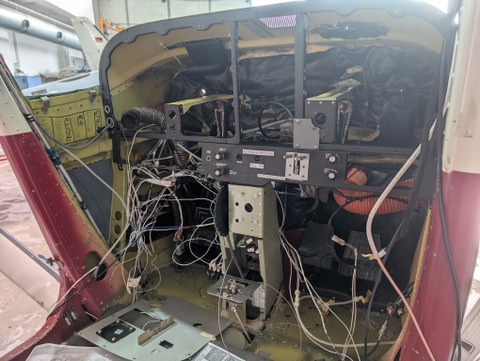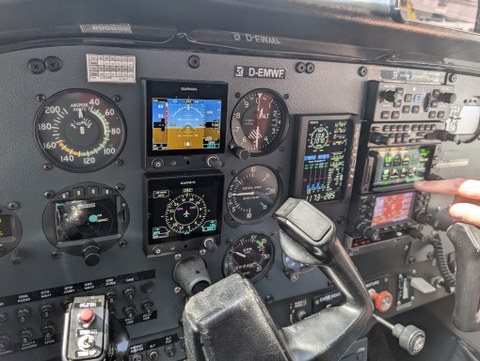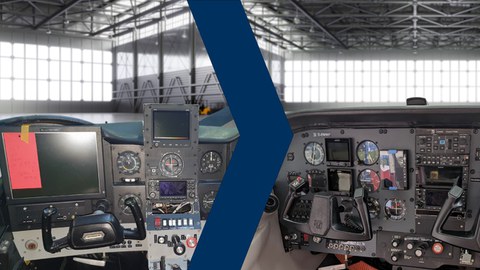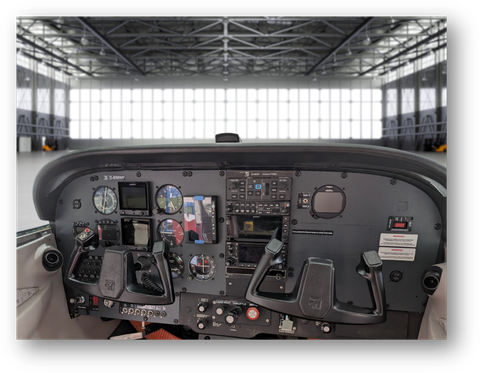May 20, 2025
TU Dresden research aircraft receives extensive cockpit conversion

Cockpit conversion of the Cessna 172
With funding from the EU and the State of Saxony, the cockpit and avionics of our Cessna 172N were extensively modernised to keep up with current scientific requirements.
As part of this modification, the structural elements of the experimental cockpit, which had been installed by the previous owner, were first removed and replaced with a standard cockpit structure.
New avionics components and accessories were then installed. The state-of-the-art avionics system now essentially consists of the following components:
- 2 independent GPS/NAV/COMM devices (Garmin 430W & Garmin GTN 650Xi)
- Garmin GFC 500 2-axis autopilot
- 2 Garmin G5 as artificial horizon & HSI
- 1 Mode-S transponder (f.u.n.k.e. TRT800H)
- 1 Traffic Display (Air Avionics)
- 1 Garmin GMA 345 audio panel
- 1 electronic engine management instrument (JPI EDM 900)
- 1 DME (King KN62A)

Modern Avionic of the Cessna 172
This means our research aircraft is now equipped with state-of-the-art avionics of the latest generation and is ready for all research tasks. The built-in autopilot makes it easier to fly defined flight tasks and trajectories, while at the same time increasing safety in the cockpit and reducing the pilot's workload. Thanks to the modern instrumentation and the installed components, the aircraft is now also IFR-certified, which further increases the possible flight scenarios.
The cockpit modification has also further increased the communication options. Our traffic display shows flight movements from FLARM, ADS-B or transponder data sources and minimises the risk of collision in flight, even during complex research flights, where collaborative flying with unmanned aerial vehicles in the same airspace is to be researched. In addition, three independent GPS and mobile phone antennas have been installed, allowing mobile phone measurements to be carried out in cooperation with the Vodafone Stiftungsprofessur at TU Dresden.
The avionics are completed by a largely paperless cockpit using tablets with the modern EFB Foreflight software. This provides access to all the necessary charts, frequencies, NOTAMS, weather and other data required for the flight.
We would like to thank the companies and partners involved in the conversion, in particular Scheiling Aircraft Services, who carried out the conversion.



